Abstract
The type C retrovirus simian T-lymphotropic virus type III (STLV-III) has been isolated recently from immunodeficient macaque monkeys at the New England Regional Primate Research Center. The present studies were done to define the in vitro growth characteristics of this agent. STLV-III replicates efficiently in interleukin 2-dependent T-cell cultures of macaque peripheral blood lymphocytes (PBL), less efficiently in such cultures of human and gibbon PBL, and inefficiently in baboon PBL. No replication, as assessed by measuring reverse transcriptase activity in these culture supernatants, could be detected in similarly maintained cultures of chimpanzee, squirrel monkey, and cotton-top tamarin PBL. Like the human acquired immunodeficiency syndrome (AIDS) virus, human T-cell lymphotropic virus III/lymphadenopathy-associated virus (HTLV-III/LAV), STLV-III replicates in T4+ but not T8+ lymphocytes and its infection of macaque and human lymphocytes can be blocked with monoclonal anti-T4 antibodies. STLV-III differs from the human AIDS virus, however, in its apparent inability to grow in the Epstein-Barr virus-transformed B lymphocytes tested, the differing range of nonhuman primate T-cell populations that support its growth, and its less striking toxicity for T lymphocytes. These studies provide further characterization of an agent that will be extremely important in facilitating the development of vaccines and antiviral therapy for AIDS.
Full text
PDF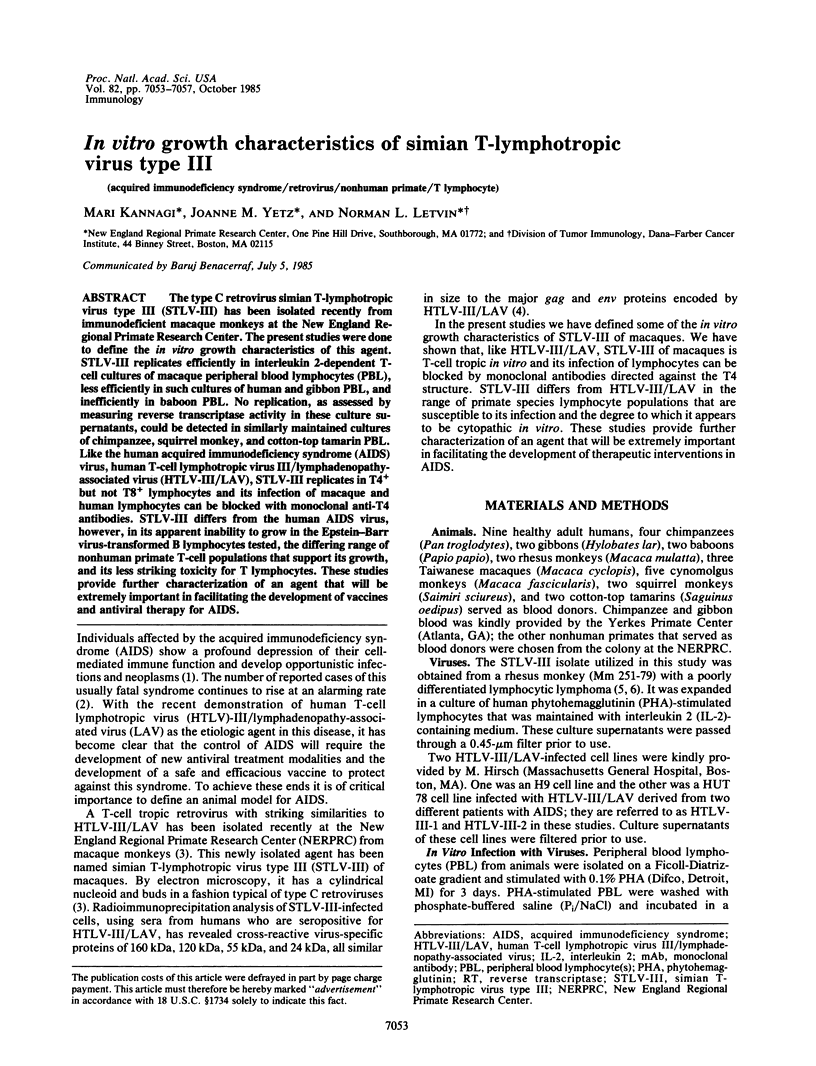
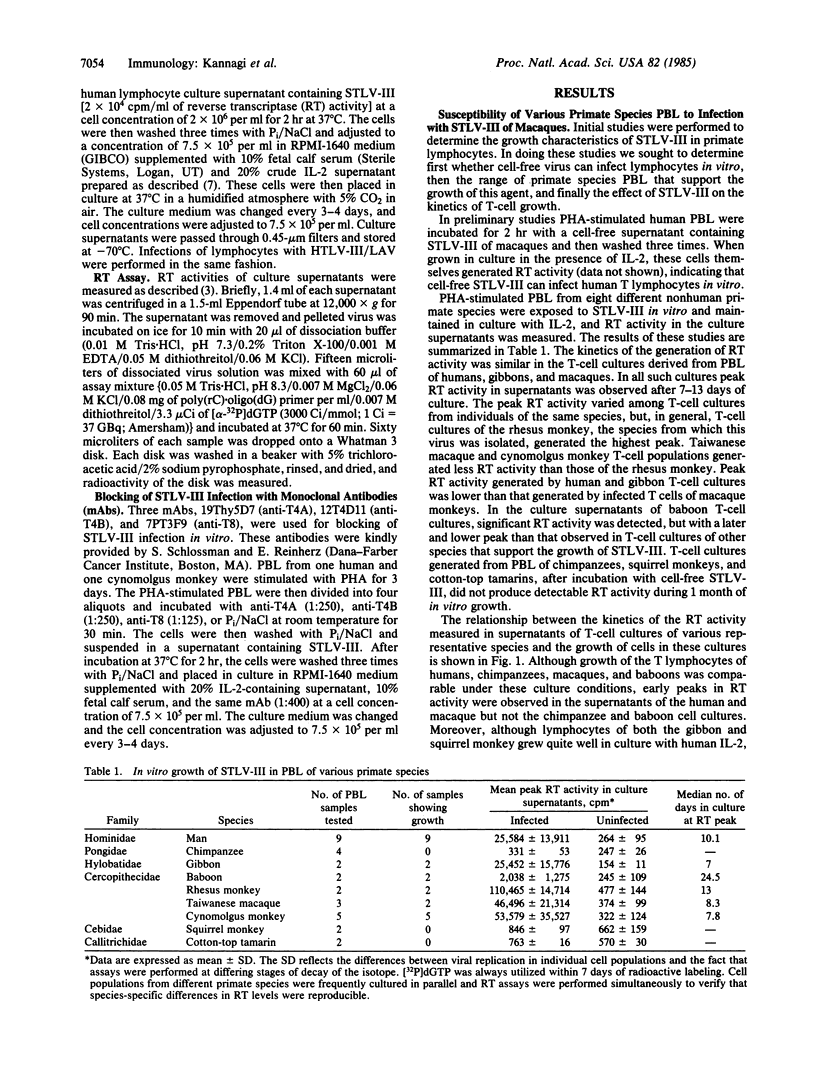
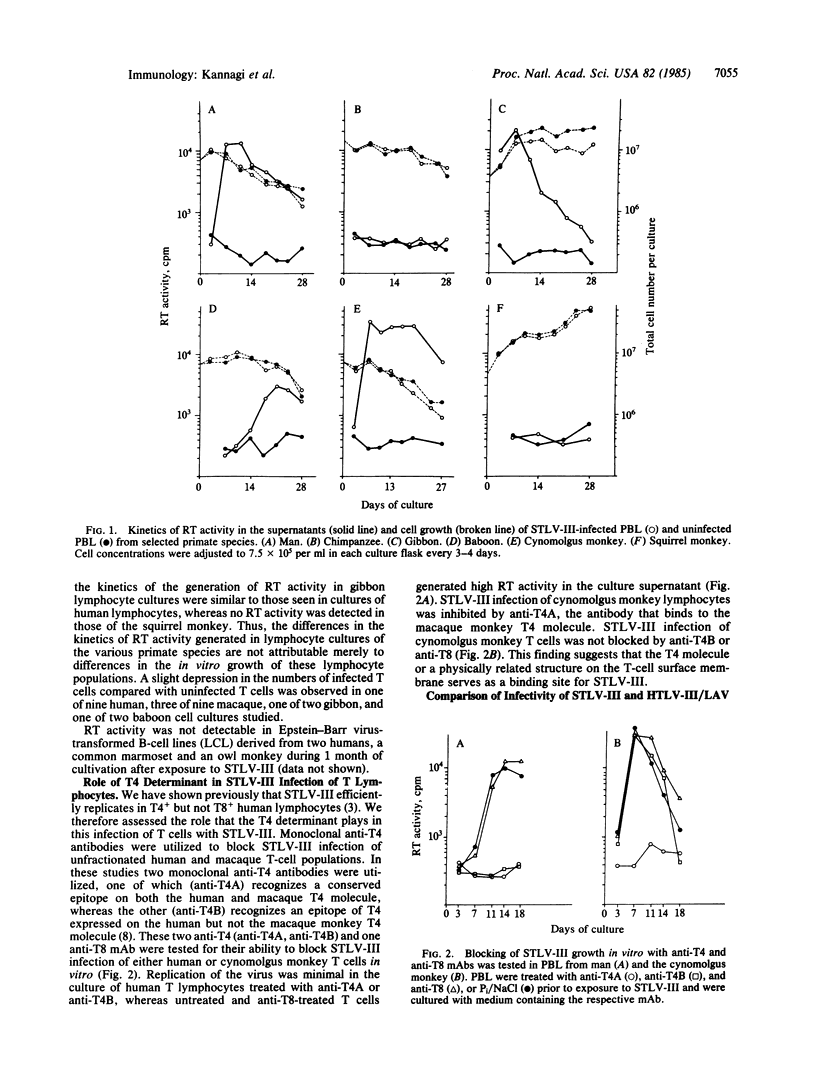
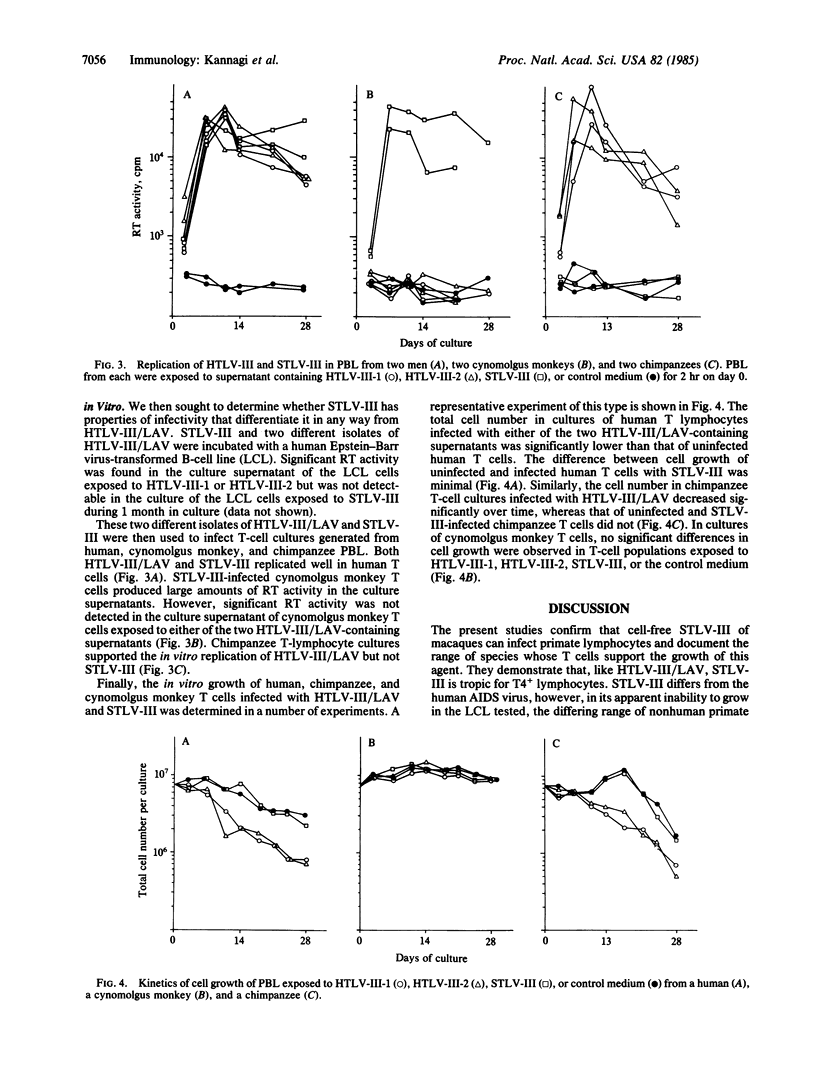
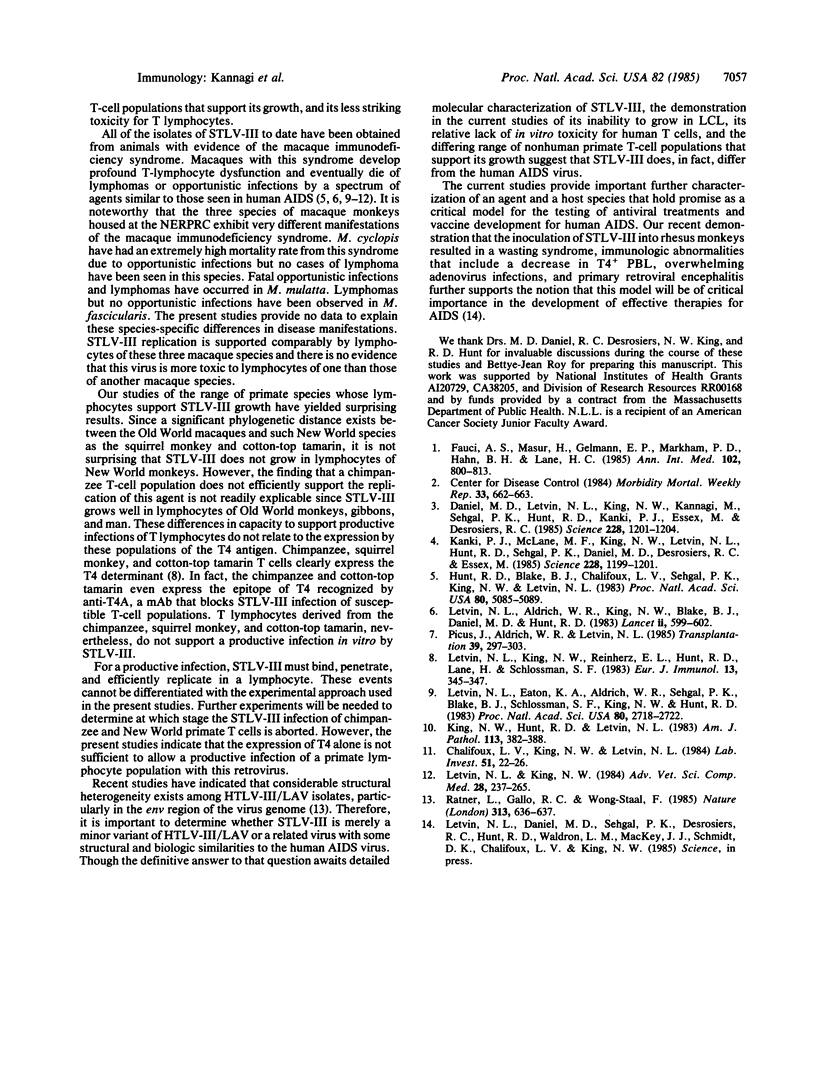
Selected References
These references are in PubMed. This may not be the complete list of references from this article.
- Chalifoux L. V., King N. W., Letvin N. L. Morphologic changes in lymph nodes of macaques with an immunodeficiency syndrome. Lab Invest. 1984 Jul;51(1):22–26. [PubMed] [Google Scholar]
- Daniel M. D., Letvin N. L., King N. W., Kannagi M., Sehgal P. K., Hunt R. D., Kanki P. J., Essex M., Desrosiers R. C. Isolation of T-cell tropic HTLV-III-like retrovirus from macaques. Science. 1985 Jun 7;228(4704):1201–1204. doi: 10.1126/science.3159089. [DOI] [PubMed] [Google Scholar]
- Fauci A. S., Masur H., Gelmann E. P., Markham P. D., Hahn B. H., Lane H. C. NIH conference. The acquired immunodeficiency syndrome: an update. Ann Intern Med. 1985 Jun;102(6):800–813. doi: 10.7326/0003-4819-102-6-800. [DOI] [PubMed] [Google Scholar]
- Hunt R. D., Blake B. J., Chalifoux L. V., Sehgal P. K., King N. W., Letvin N. L. Transmission of naturally occurring lymphoma in macaque monkeys. Proc Natl Acad Sci U S A. 1983 Aug;80(16):5085–5089. doi: 10.1073/pnas.80.16.5085. [DOI] [PMC free article] [PubMed] [Google Scholar]
- Kanki P. J., McLane M. F., King N. W., Jr, Letvin N. L., Hunt R. D., Sehgal P., Daniel M. D., Desrosiers R. C., Essex M. Serologic identification and characterization of a macaque T-lymphotropic retrovirus closely related to HTLV-III. Science. 1985 Jun 7;228(4704):1199–1201. doi: 10.1126/science.3873705. [DOI] [PubMed] [Google Scholar]
- King N. W., Hunt R. D., Letvin N. L. Histopathologic changes in macaques with an acquired immunodeficiency syndrome (AIDS). Am J Pathol. 1983 Dec;113(3):382–388. [PMC free article] [PubMed] [Google Scholar]
- Letvin N. L., Aldrich W. R., King N. W., Blake B. J., Daniel M. D., Hunt R. D. Experimental transmission of macaque AIDS by means of inoculation of macaque lymphoma tissue. Lancet. 1983 Sep 10;2(8350):599–602. doi: 10.1016/s0140-6736(83)90682-7. [DOI] [PubMed] [Google Scholar]
- Letvin N. L., Eaton K. A., Aldrich W. R., Sehgal P. K., Blake B. J., Schlossman S. F., King N. W., Hunt R. D. Acquired immunodeficiency syndrome in a colony of macaque monkeys. Proc Natl Acad Sci U S A. 1983 May;80(9):2718–2722. doi: 10.1073/pnas.80.9.2718. [DOI] [PMC free article] [PubMed] [Google Scholar]
- Letvin N. L., King N. W. Clinical and pathologic features of an acquired immune deficiency syndrome (AIDS) in macaque monkeys. Adv Vet Sci Comp Med. 1984;28:237–265. doi: 10.1016/b978-0-12-039228-5.50013-9. [DOI] [PubMed] [Google Scholar]
- Letvin N. L., King N. W., Reinherz E. L., Hunt R. D., Lane H., Schlossman S. F. T lymphocyte surface antigens in primates. Eur J Immunol. 1983 Apr;13(4):345–347. doi: 10.1002/eji.1830130414. [DOI] [PubMed] [Google Scholar]
- Picus J., Aldrich W. R., Letvin N. L. A naturally occurring bone-marrow-chimeric primate. I. Integrity of its immune system. Transplantation. 1985 Mar;39(3):297–303. doi: 10.1097/00007890-198503000-00018. [DOI] [PubMed] [Google Scholar]
- Ratner L., Gallo R. C., Wong-Staal F. HTLV-III, LAV, ARV are variants of same AIDS virus. Nature. 1985 Feb 21;313(6004):636–637. doi: 10.1038/313636c0. [DOI] [PubMed] [Google Scholar]


